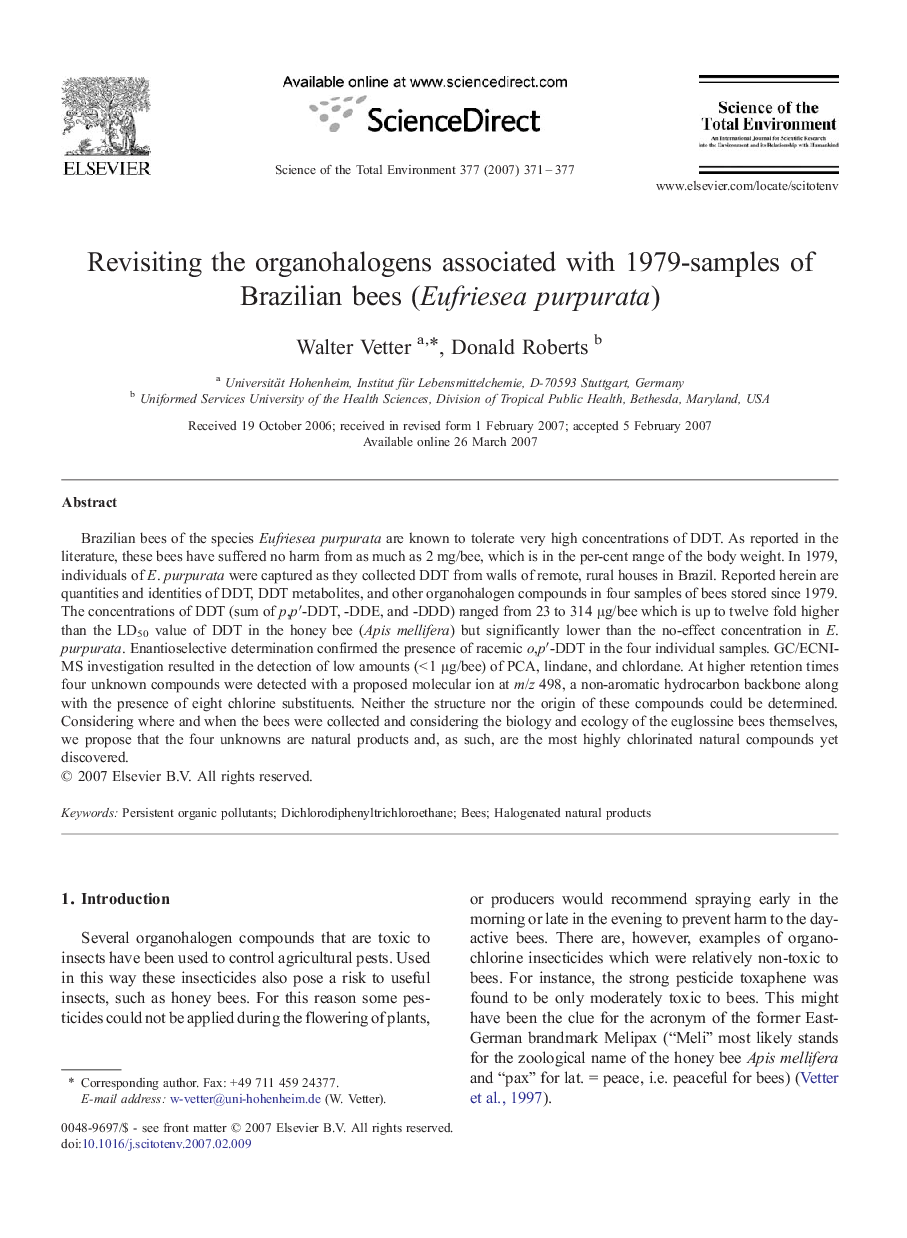| Article ID | Journal | Published Year | Pages | File Type |
|---|---|---|---|---|
| 4433436 | Science of The Total Environment | 2007 | 7 Pages |
Brazilian bees of the species Eufriesea purpurata are known to tolerate very high concentrations of DDT. As reported in the literature, these bees have suffered no harm from as much as 2 mg/bee, which is in the per-cent range of the body weight. In 1979, individuals of E. purpurata were captured as they collected DDT from walls of remote, rural houses in Brazil. Reported herein are quantities and identities of DDT, DDT metabolites, and other organohalogen compounds in four samples of bees stored since 1979. The concentrations of DDT (sum of p,p′-DDT, -DDE, and -DDD) ranged from 23 to 314 μg/bee which is up to twelve fold higher than the LD50 value of DDT in the honey bee (Apis mellifera) but significantly lower than the no-effect concentration in E. purpurata. Enantioselective determination confirmed the presence of racemic o,p′-DDT in the four individual samples. GC/ECNI-MS investigation resulted in the detection of low amounts (< 1 μg/bee) of PCA, lindane, and chlordane. At higher retention times four unknown compounds were detected with a proposed molecular ion at m/z 498, a non-aromatic hydrocarbon backbone along with the presence of eight chlorine substituents. Neither the structure nor the origin of these compounds could be determined. Considering where and when the bees were collected and considering the biology and ecology of the euglossine bees themselves, we propose that the four unknowns are natural products and, as such, are the most highly chlorinated natural compounds yet discovered.
